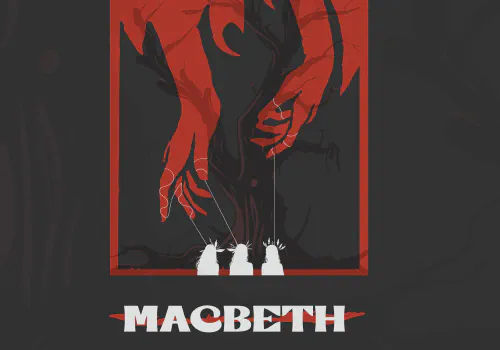By Daniel Frezza
“Elementary, my dear Watson!” That famous line is not by Sir Arthur Conan Doyle. It began as “Elementary! The child’s play of deduction!” in the play Sherlock Holmes, by William Gillette (Sherlock Holmes: The Published Apocrypha, Jack Tracy, Ed. [Houghton Mifflin: Boston, 1980], 113). He later added “Elementary my dear fellow!” (*Sherlock Holmes,*William Gillette [Doubleday, Doran & Company: Garden City, NY, 1935], 82). That was tweaked into its iconic form in Paramount’s 1929 film The Return of Sherlock Holmes (starring Clive Brook). (*The Return of Sherlock Holmes.*www.imdb.com/title/tt0020324/trivia?ref_=tt_sa_1). This is just one small example of the continuing re-invention of Conan Doyle’s imperishable creation.
Arthur Ignatius Conan Doyle (1859–1930) was born in Edinburgh, Scotland. His literary talent was evident early on. As a student he wrote verses, was a popular story-teller among his classmates, and edited the school newspaper. To earn income while studying medicine at Edinburgh University, he began writing short stories, medical articles and articles on photography. A Study in Scarlet, the novel that introduced Sherlock Holmes, appeared in 1887. It was popular, and he was commissioned by the American publication, Lippincott’s Magazine, to write another Holmes story, The Sign of the Four (1890).
In 1891, while recovering from a nearly fatal bout of influenza, Conan Doyle decided to give up his only modestly successful medical practice for a writing career (Memories and Adventures, Arthur Conan Doyle [Little, Brown & Co.: Boston 1924], 91). That same year began his association with The Strand Magazine, which published fifty-eight other Holmes adventures, the last collection appearing in 1927. Preferring to write more serious work, he killed off Holmes in “The Final Problem” (1893). His other stories and novels were successful though not on the same scale as the Holmes tales. Public demand, The Strand publisher’s entreaties, and economic needs led him to write The Hound of the Baskervilles (1901). Thereafter he found time to write Sherlock Holmes stories as well as his preferred work.
Conan Doyle had begun writing drama in 1885 (Memories and Adventures, 225). He collaborated with his friend J. M. Barrie (author of Peter Pan) on an operetta. It had little success, but some of his other plays (written on his own) were successful. The great actor-manager Henry Irving produced The Story of Waterloo (1894) and kept it in his repertory for many years (*Sherlock Holmes on the Stage,*Amnon Kabatchnik [The Scarecrow Press: Lanham, Maryland, 2008], x). Conan Doyle’s greatest stage success by far was another collaboration based on his most memorable character. He wrote the first version of Sherlock Holmes in 1897 and sent it to Herbert Beerbohm Tree, another great English actor-manager. Tree expressed interest but requested a massive rewrite so he could play both Holmes and Moriarty (*William Gillette, America’s Sherlock Holmes,*Henry Zecher [Xlibris Press: USA, 2011], 285.) Conan Doyle next offered it to Irving, who declined. By then he began to have reservations about putting Holmes on the stage at all, worried that it might draw attention to “my weaker work which has unduly obscured my better” (*The Adventures of Arthur Conan Doyle,*Russell Miller [Thomas Dunne Books: New York, 2008], 199). His agent, realizing the play’s potential, sent it to American producer Charles Frohman who had inquired earlier about basing a play on Holmes. Frohman showed the script to actor-playwright William Gillette (*William Gillette, America’s Sherlock Holmes,*286).
Gillette (1853-1937), born in Hartford, Connecticut, made his acting debut in 1875 and was for many decades one of America’s greatest stars. In 1881 he appeared in the title role of his own play, The Professor. He had major successes in America and England with his two Civil War plays, Held by the Enemy (1886) and Secret Service (1896). Gillette read Conan Doyle’s script and asked permission to revise it. The author agreed, stipulating only that there be no love interest. When Gillette later pressed him on this, Conan Doyle replied, “You may marry him, murder him, or do anything you like to him” (Memories and Adventures, 97). Gillette’s revision left little of the original script but he credited Conan Doyle as co-author. (In the 1935 edition Conan Doyle received only a source credit.) Sherlock Holmes opened at Manhattan’s Garrick Theater November 6, 1899 and ran for 256 performances. Gillette took it on a lengthy American tour, then to England in the fall of 1901 where it was equally popular. (*Sherlock Holmes on the Stage,*15). He became identified with the role of Holmes, playing it more than 1,300 times over thirty years (Sherlock Holmes: The Published Apocrypha, 57).
Gillette’sSherlock Holmes is a melodrama that uses a few elements from several Holmes stories, principally “A Scandal in Bohemia” (recovering letters and a photograph embarrassing to royalty) and “The Final Problem” (pursuing arch-criminal Professor Moriarty). The added love interest is the victimized Alice Faulkner, replacing Conan Doyle’s Irene Adler as possessor of the incriminating letters and photograph. Holmes fans will realize what a drastic change this is since Adler is someone who beats Holmes at his own game then leaves.
The Royal Shakespeare Company’s 1974 adaptation of Gillette’s play proved highly successful in London and later in New York, running there for 219 performances. Its success prompted revivals by regional theatres in America and England. Samuel French (UK) published the RSC adaptation in 1976. Readers interested in the play Gillette performed should see the 1922 version (included in Houghton Mifflin’s Sherlock Holmes: The Published Apocrypha) or Doubleday’s 1935 edition. The latter is considered definitive; Gillette consulted on it and did not perform the play (or presumably make any further changes) after that date.
Still effective and still produced, Gillette’s play has drawbacks. There’s little of Conan Doyle in it. From the beginning, critics have found its plot over-complicated (*Sherlock Holmes on the Stage,*297). With five sets and twenty characters, it’s expensive to stage. Gillette’s Holmes, based as much on himself as on the original character, is a nineteenth-century melodrama hero, whereas Conan Doyle’s Holmes feels perennially contemporary even though his adventures are set in the Victorian and Edwardian periods.
Enter Steven Dietz to re-invent Holmes once more.
Dietz (1958) was born in Denver, Colorado, earned his B.A. in theatre arts from the University of Northern Colorado then moved to Minneapolis to begin his career as a director. During these years he began writing plays. A commission from ACT Theatre took him to Seattle in 1988. He currently divides his time between Seattle and Austin, where he teaches playwriting and directing at the University of Texas at Austin. Dietz has written over thirty plays, both original works and adaptations, and has received numerous playwriting awards, including the 2007 Edgar Allan Poe Award for Best Play for *Sherlock Holmes: The Final Adventure,*which premiered in 2006 (Sherlock Holmes: The Final Adventure, Steven Dietz [Dramatists Play Service: New York, 2007]).
Dietz is more faithful to Conan Doyle in content, pace, and tone than Gillette; and his fluid staging better accommodates Conan Doyle’s narrative structure than Gillette’s elaborate nineteenth century staging. He deftly interweaves the plots of “A Scandal in Bohemia” and “The Final Problem” with portions of Gillette’s play. Watson is more prominent, often narrating the action, as he does in the stories. Irene Adler is restored, replacing Gillette’s weaker heroine. Dietz retains the love interest but adds the climactic struggle between Holmes and Moriarty at the Reichenbach Falls, thus avoiding Gillette’s sentimental ending. He adds various twists of his own, with an especially satisfying one at the end, inspired by “The Empty House” (not yet written when Gillette’s play premiered). Most important, Holmes feels authentic and contemporary.
Conan Doyle was enthusiastic about Gillette’s work. “It was written and most wonderfully acted by William Gillette, the famous American. Since he used my characters and to some extent my plots, he naturally gave me a share in the undertaking which proved to be very successful. . . . I was charmed both with the play, the acting and the pecuniary results” (Memories and Adventures, 97). Nevertheless, Conan Doyle was more devoted to and prouder of his other work as a military historian, author of historical novels and science fiction, social reformer, and advocate for Spiritualism. Fortunately for us, he was willing to satisfy the public’s demand for more Holmes stories. Fortunately for himself, too, for Sherlock Holmes has assured Conan Doyle’s lasting fame.










